February fruit tree round up
Fruit trees are extremely practical to have. The fruit can be left on the tree to be used at one’s convenience. An established tree can produce quite a bit of fruit. There may be so much fruit that they may start to rot before they are consumed. What better then to offer your neighbors, friends, and relatives some fresh fruit?
There are so many types of fruit trees available for growing. Here in Zone 10, the climate allows for quite a selection. Being the practical person that I am, I am starting off with fruits that are hard to find at the local market and fruits that used in cooking.
Fruit trees used to be quite expensive. The way prices work for fruit trees is that older trees cost more than younger trees. Fortunately, prices of many fruit tree types have gone down over the last five years from what appears to be an increase in the supply of younger dwarf trees. The big box retailers here carry many dwarf citrus tree and avocado varieties for about $25 each.
With yard space being a premium, dwarf trees make it possible to grow a few different types of trees. Generally, dwarf trees start out at around three feet tall. While they will fruit, there may not be enough to share. At $25 a pop, they are a good value. My hope is that by waiting a couple of years for the trees to get bigger, they’ll return more fruit.
Here is my collection of fruit trees:
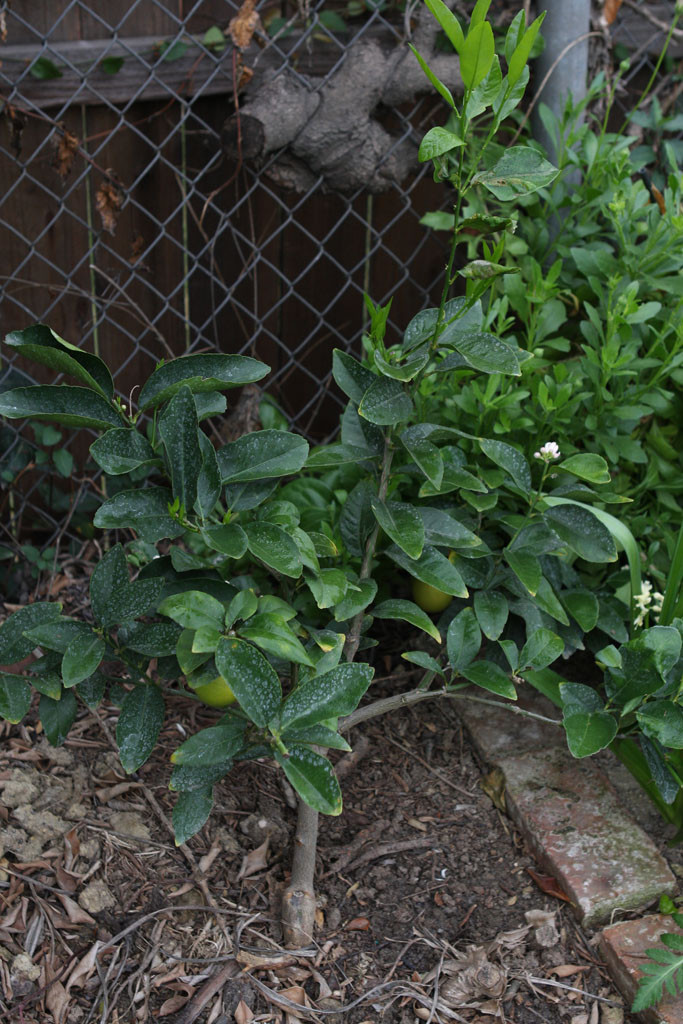
Lime is used in a good number of the dishes that I cook and the drinks that I make. Limeades, Mojitos, Moscow Mules, lime and club soda. In cooking, limes are used in the Mexican, Vietnamese, and Thai dishes. This makes this tree a must have since it has so many uses. More importantly, when not in season, limes from the market are both expensive and frustratingly hard to use because they are not as juicy.
This dwarf Bearss lime (Citrus latifolia) was purchased last summer. It produced about ten limes. There two are left and the blossoms are forming fruit waiting to be pollinated.
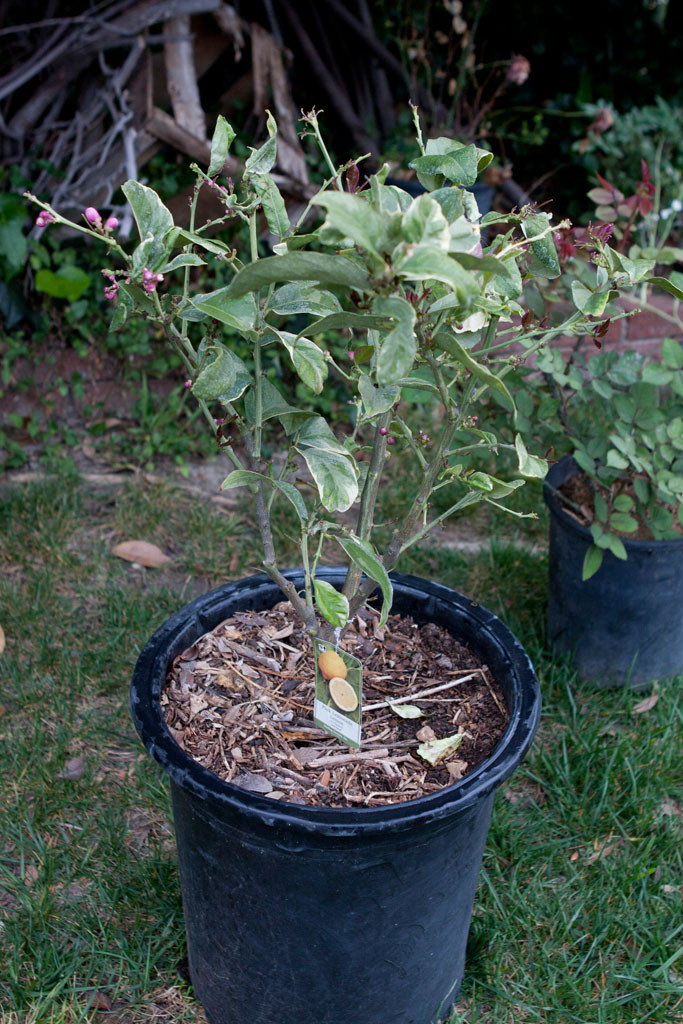
Compared to limes, I do not use lemons as often. They are great in sweet tea. Every now and then, they are used in cooking. Having a lemon tree around is good for those times when a lemon is needed. Since I do not need a lot of lemons, I picked a semi-dwarf pink lemonade lemon (Citrus limon). It is a variety of Eukera lemon that has variegated leaves and rind. The variegated characteristics makes it a lovely ornamental tree. With my preference for plants with variegated patterns, I had to have this tree. The downside is that it does not produce large or lots of lemons. I’ve had this tree since last fall and I am yet to get a lemon. It has flowered but the fruit has not set. I am hoping that fruit will set this time around.
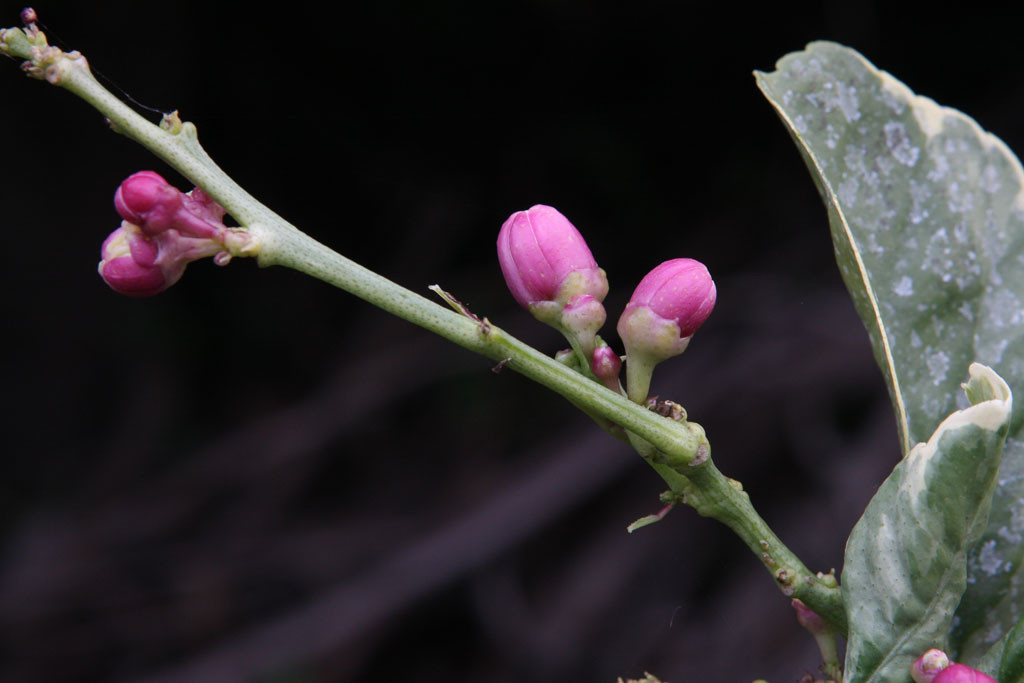
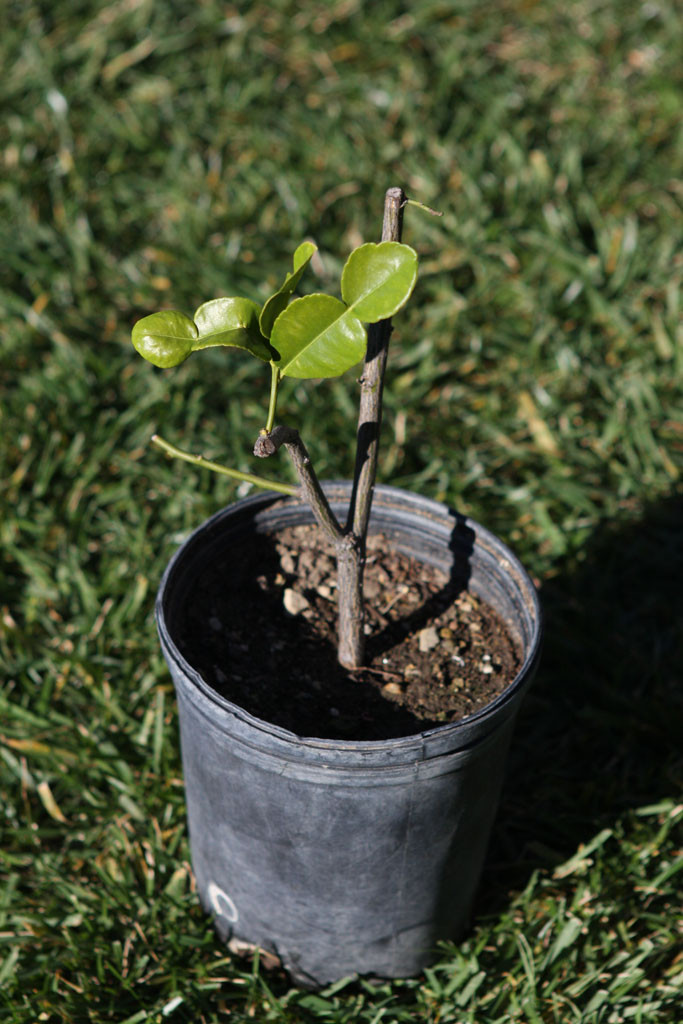
http://aggie-horticulture.tamu.edu/earthkind/landscape/air-layering/
This Kaffir lime (Citrus hystrix) was given to me by way of my brother. He propagated this from our dad’s tree using a technique called, “air layering.” When this new ‘tree’ was removed from the original tree, it had these three leaves. Through fall and most of winter the leaves remained. With the leaves intact, it was looking like it was doing well on its own. The next signs to look out for are new leaf buds. With the other citrus trees sending out new leaf buds, it is time for this to follow suit. Anxiously, I wait for further signs of progress.
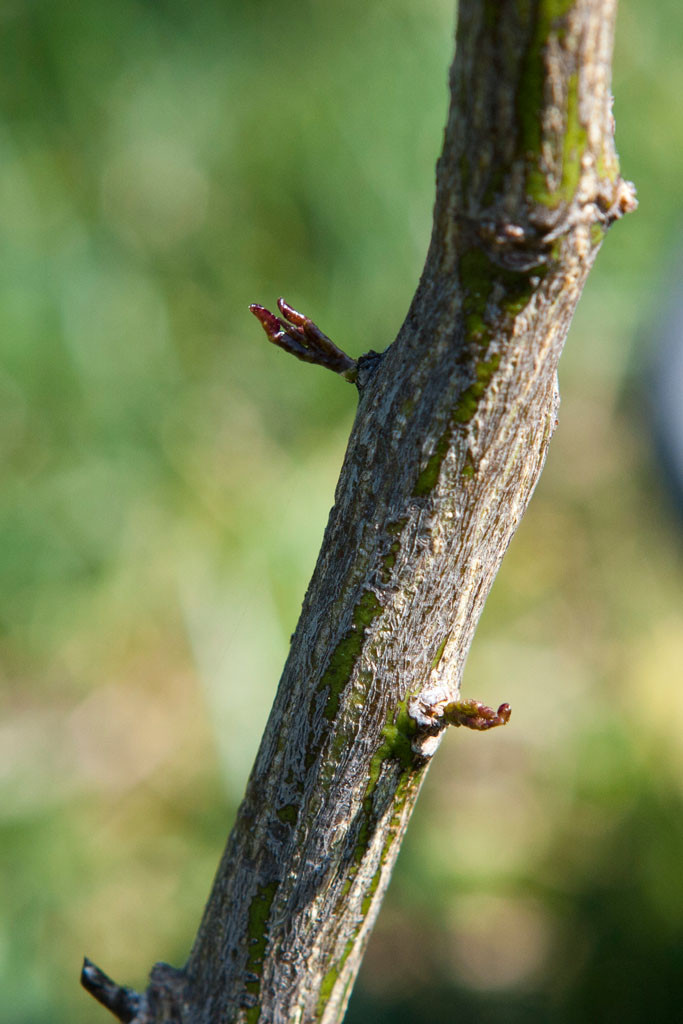
Lo and behold, the Kaffir lime is sending out leaf buds as well. As for how I use Kaffir lime, I mostly use it for making green curry and Kaffir lime and ginger gimlets.
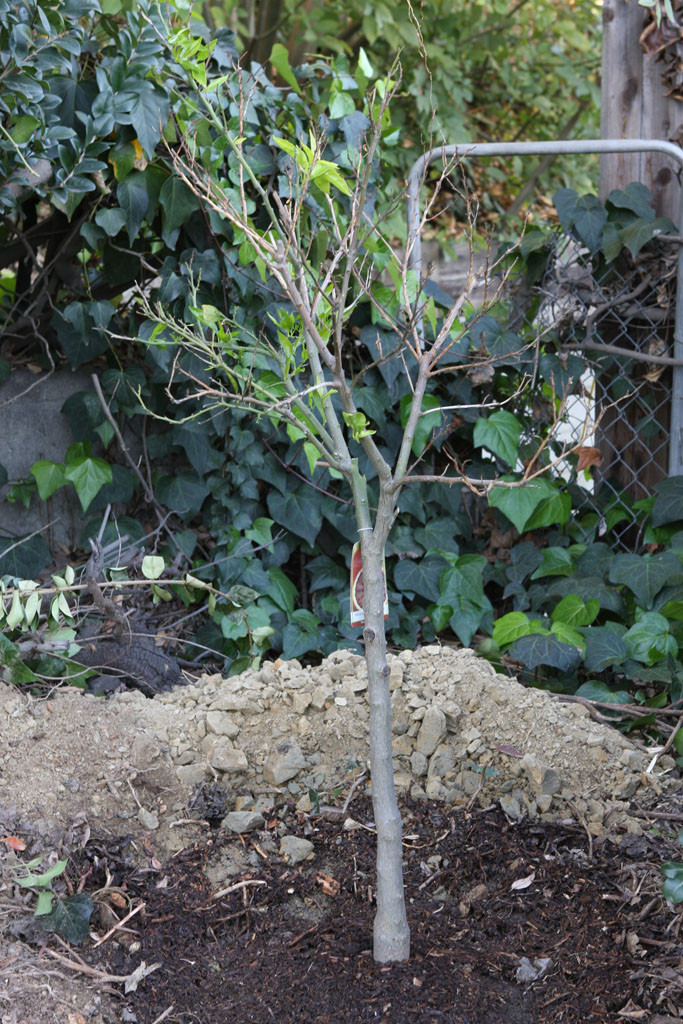
This Moro blood orange (Citrus sinensis) was purchased at a nursery last spring. Of the different varieties of blood oranges, this one was selected to be my main supplier. Seeing the Moro blood oranges at the farmers markets is a good indicator that it grows well in the area. The other reason for selecting this variety is that it appears to have the highest concentration of the antioxidant pigments amongst the blood orange varieties.
In order to have high fruit yields, I went with a standard (non dwarf) tree. The tree was in its container for most of the year as I was not sure where it would be planted. In that time, some of the branches started to die off. It has now been planted into the ground after its fruit ripen. More on this blood orange here: https://www.neverenoughdirt.com/the-moro-of-the-story/
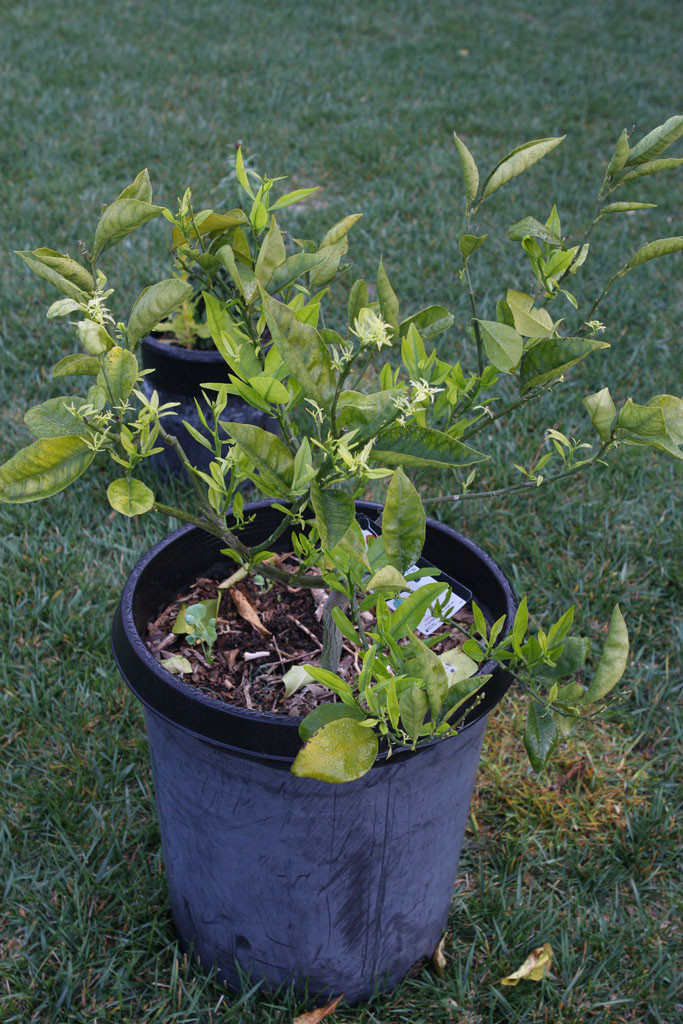
At around this time a year ago, this dwarf Sanguinelli blood orange (Citrus sinensis) was purchased online (https://www.fourwindsgrowers.com). I went online after not finding this variety at the big box retailers and nurseries. It was the first time receiving a tree in the mail sight unseen. I had a good experience with the process and would purchase a several more trees a few months later. As for this variety of blood orange, it is the variety commonly used in Italy. Compared to the Moro, the Sanguinelli has the potential to be sweeter. It requires more heat to sweeten the fruit though. While it is more suited for the climate about 20 miles east, it gets hot enough here.
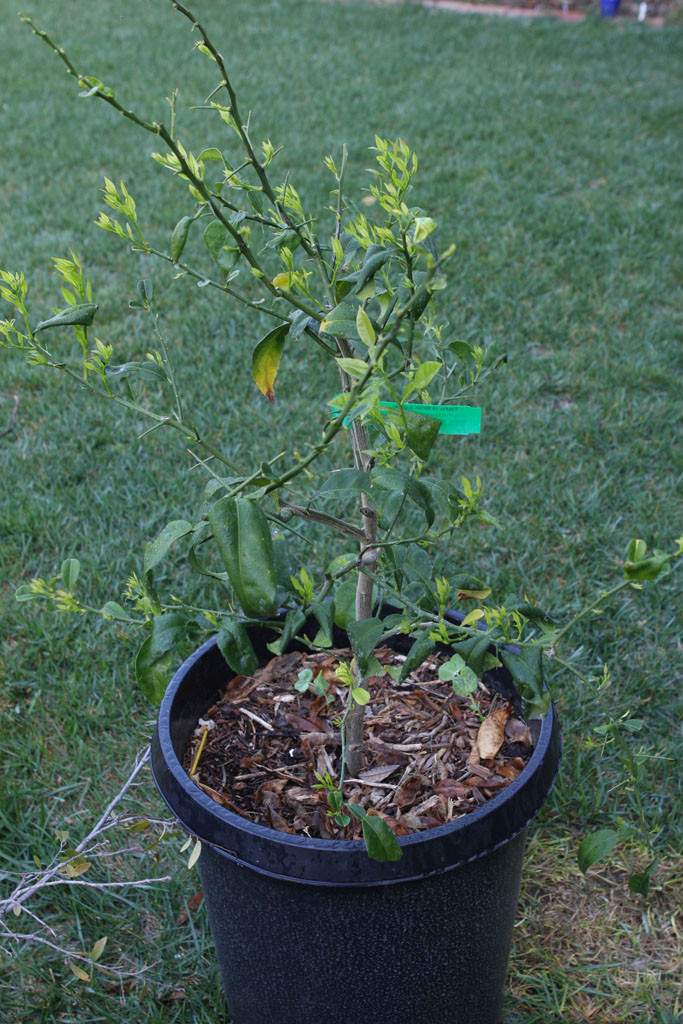
This Yuzu (Citrus ichangensis x C. reticulata) was also received in the mail. I am drawn to this tree for its origin having been from China. It is also important to note that there are claims that the Yuzu originated in Korea. The fruit is used to make Yuzukosho and Ponzu sauce. Yuzukosho is made from the rind of the unripe fruit. I enjoy it very much with sushi.
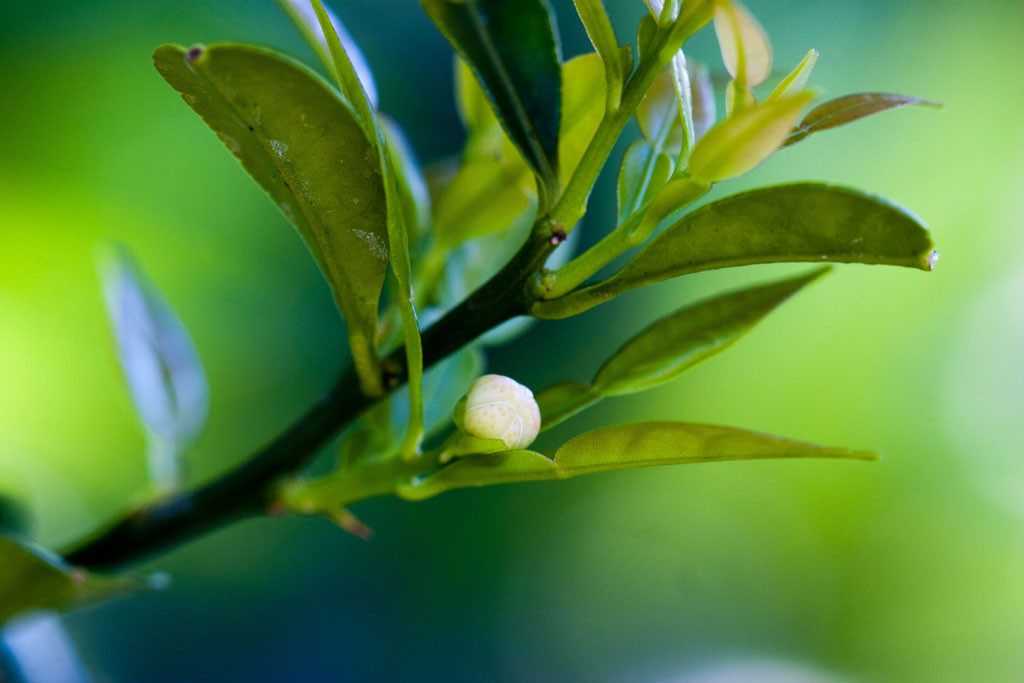
It was a nice surprise when I noticed today that three blossoms are on the tree. Hopefully more appear and the tree sets fruit.
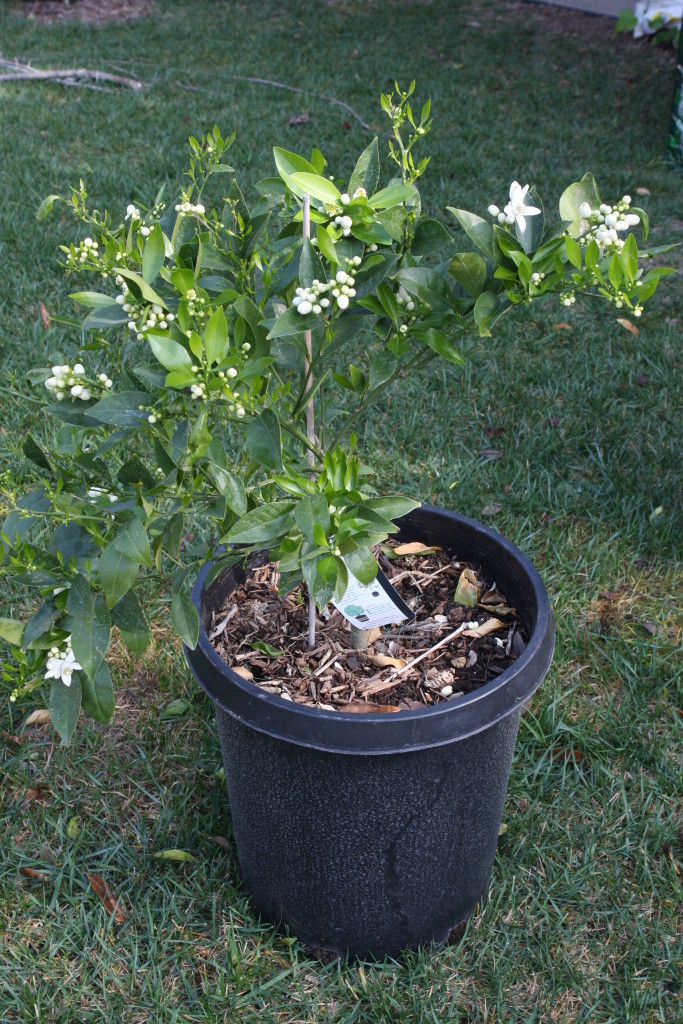
Another tree ordered online. I was looking for an orange with green skin and spend quite some time with internet searches to track down the name. I mistook the Robertson naval orange (Citrus sinensis) and ordered it. The tree I was looking for is called a “Cam Sanh” or “King Mandarin.” No less, I am looking forward to fruit from the Robertson naval orange tree. It is my only naval orange tree and I am excited to see if it will set fruit this year.
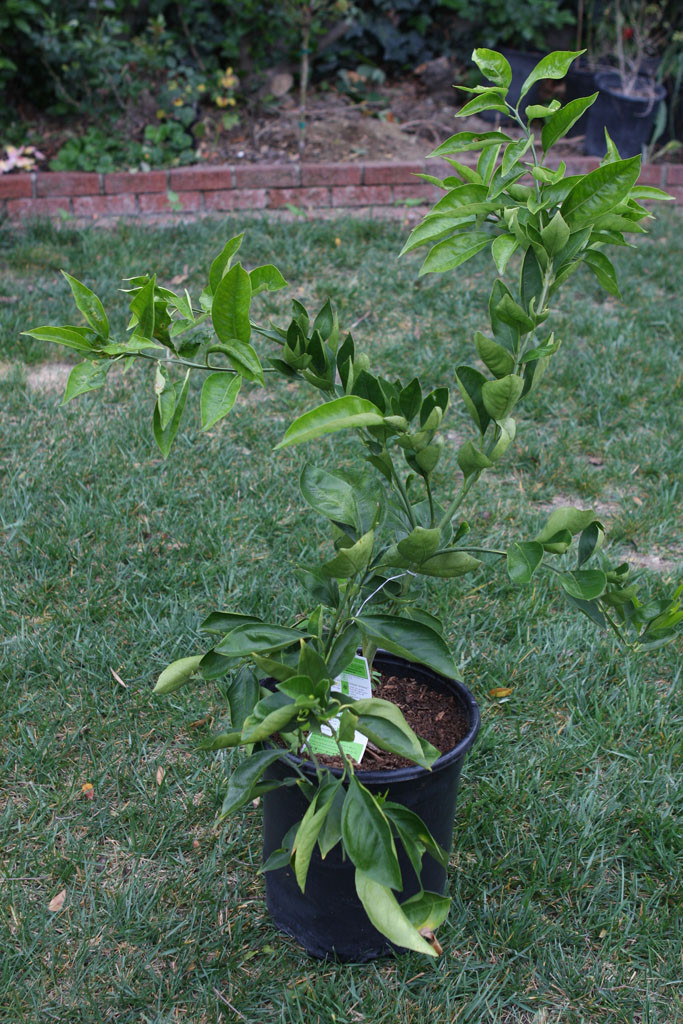
Rounding out the citrus and blood oranges is this Tarocco blood orange (Citrus sinensis). Of the blood oranges, it is the sweetest. I am always going through the citrus tree stock at the big box home improvement stores to see what they have. This was the only Tarocco among the pots of other citrus trees. I walked away at first. I was not excited about the Tarocco’s characteristic of being more like a standard orange. When I saw the Tarocco again, I thought to myself, “Why not complete the blood orange collection?”
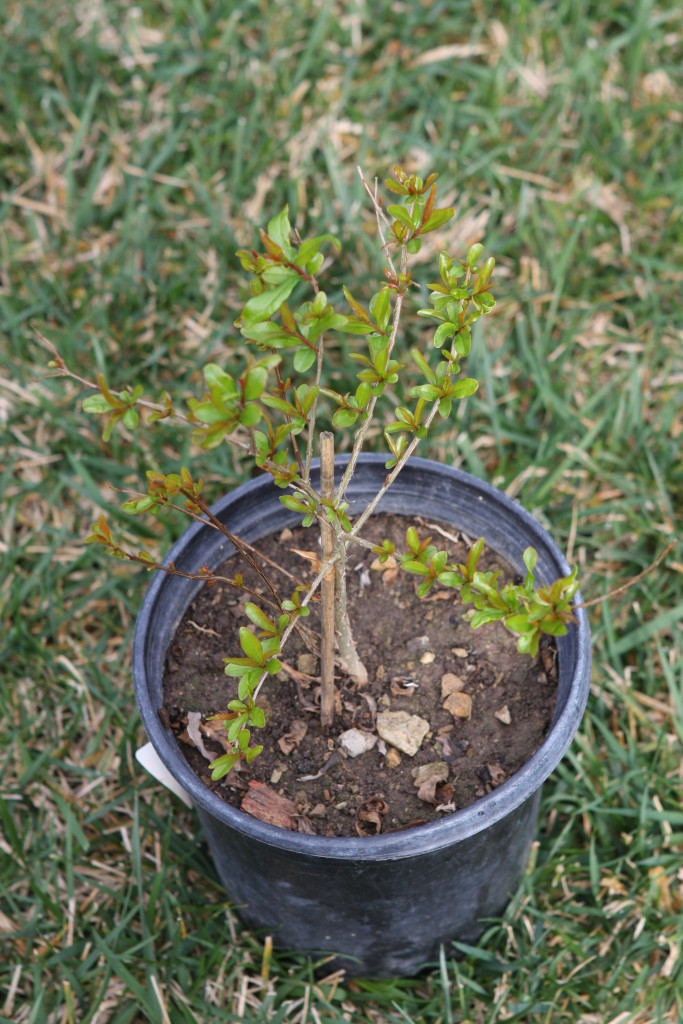
Many many years ago my family received a young pomegranate (Punica granatum) tree that someone had grown from seed. That tree matured to produce softball sized sweet fruit. My mom seeds a lot of trees from that tree. Someday this tree may produce some really good pomegranate.
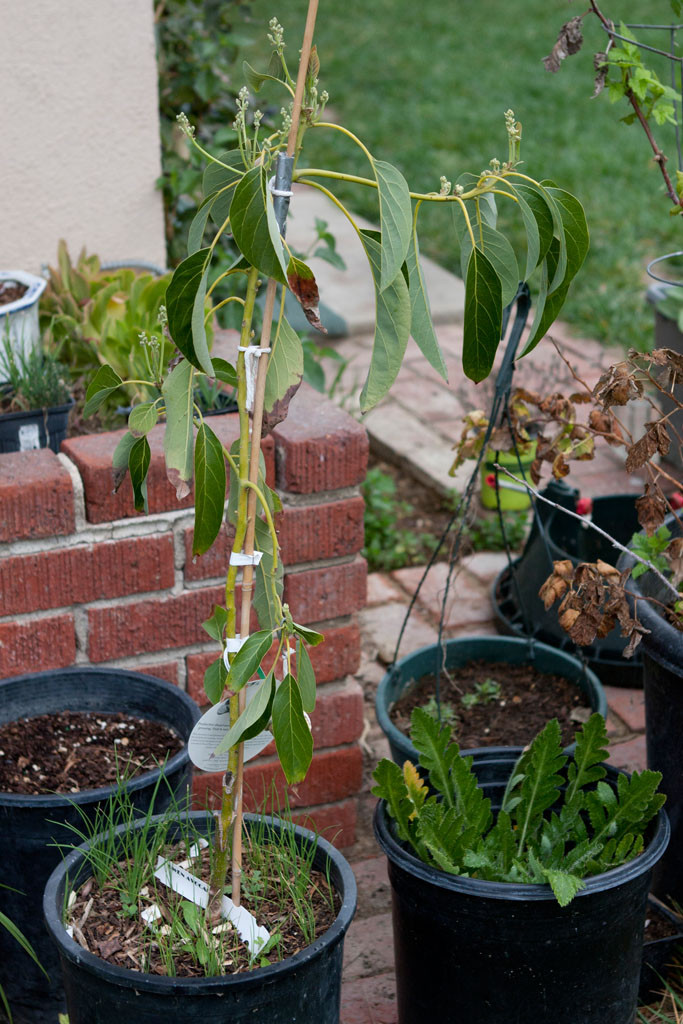
This Gwen avocado (Persea americana) was purchased online. The seller labels this as an “one year old tree.” They do not expect their trees to fruit until they reach three years. Surprisingly, it is setting out blossoms. To let the tree concentrate its energy towards growth, I nipped all the buds off. The Gwen avocado is a Hass type avocado. I am quite fond of the Hass variety. The hard skin makes it easy to get the fruit off. It is also richer and creamer than other varieties.
The Gwen was selected for its characteristics of fruiting between April and June. It is also a smaller tree with high yields.
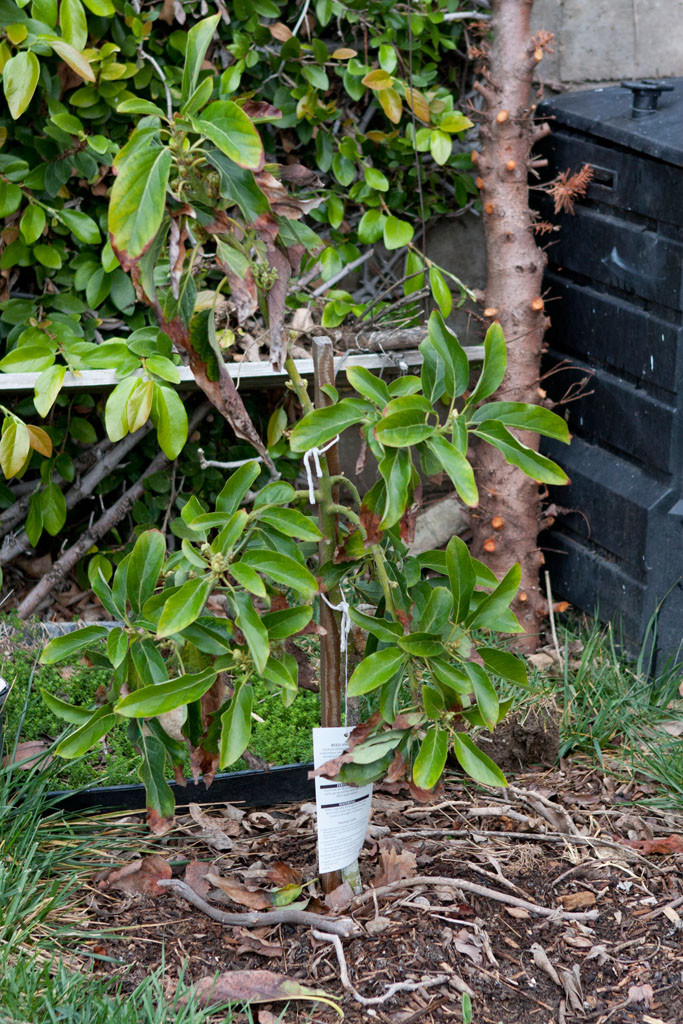
When the Gwen is done fruiting, the Reed avocado will being its fruiting. Between the two trees, there is potential to have avocado from spring into late fall. The Reed is also a Hass avocado. It produces large round creamy and buttery avocados. The tree was purchased at a big box home improvement retailer and quickly planted in the ground.
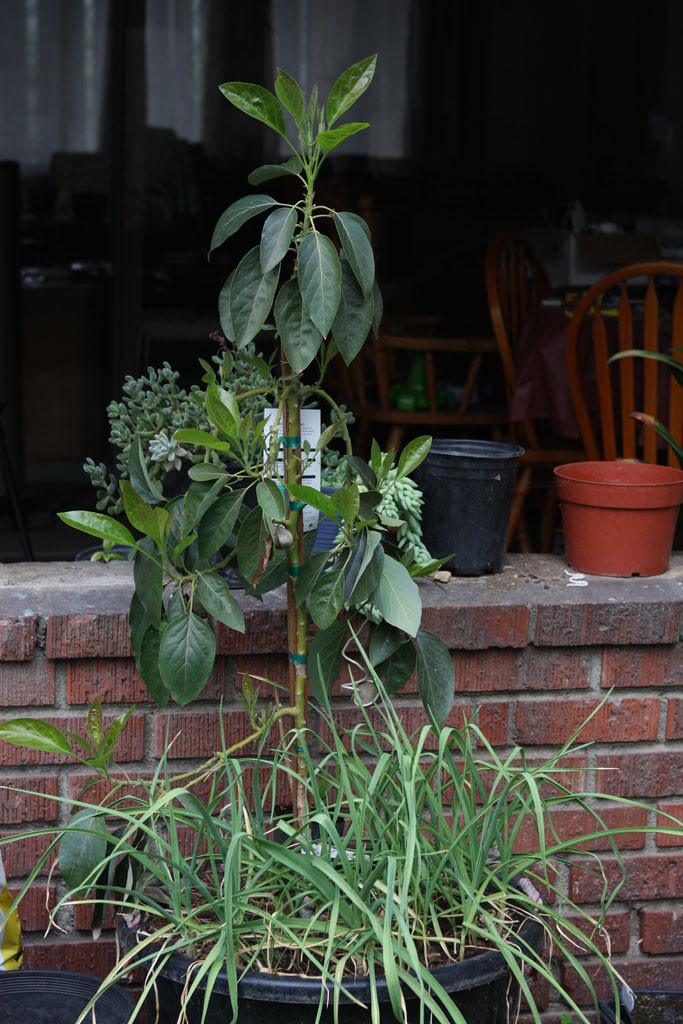
Since I was not sure if I would be moving, I went and bought another Reed and planted it in a container. Both trees are fruiting and I am wondering if I want to nip the buds off one of the trees or leave them both to fruit.
